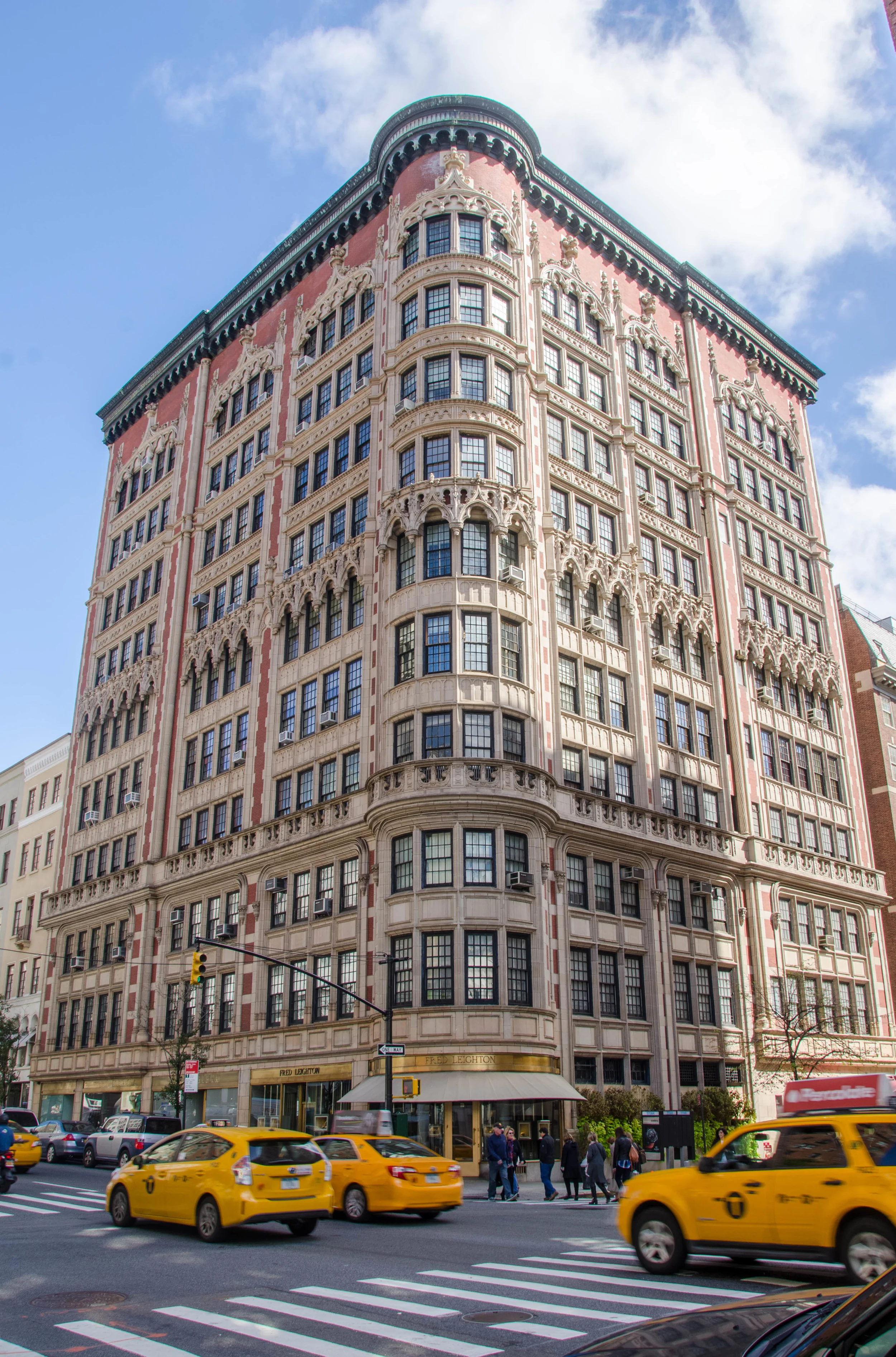This building is an example of how lifestyles have evolved over the decades. It was one of the first luxury apartment houses that replaced many single family homes in the city.
For economic as well as practical reasons, those who could afford it began to favor living in apartments. When it was completed in 1908, the Lenox Hill building stood out from the low scale row houses that comprised the rest of the block.
This mid-rise, red and white Gothic creation had a fence around it and the entrance was located on Madison Avenue, hence the 777 Madison Avenue address. However, the building was initially called Park View for a very brief period of time.
Designed by Herbert Harde and Richard Short and owned by Charles Rogers, the building originally had two apartments per floor, each of which had 12 or 13 rooms. This was in order to accommodate the household staff. The building also had a full staff, including a doorman.
The apartment dweller, "can be entirely isolated and experience the joy of living 100 to 200 feet in the air, above the noise and dust of the street, and if he desires to travel need only dismiss his help and latch the front door, with none of the dreaded discomfort of closing up a huge house," noted a 1918 article in Architecture by Lafayette A. Goldstone.
Although the Dakota, which was completed in 1884, was one of the first luxury apartment houses on Central Park West and others followed there, this building set the tone for the ones that would be constructed on the Upper East Side. Elegance was very much in style at the time and in 1909 the Verona was completed at 64th and Madison Ave.
This building has two facades, one facing 66th St. and the other facing Madison Ave. The two are joined by a distinctive corner tower intended to bring to mind contemporary Parisian apartment buildings. The original entrance was located directly below these windows and was relocated to its present address in 1929.
Not surprisingly, several of the early residents were people of note. Among them was Henry Poor, the President of Poor's Manual of Railroads. This publication, started by his father, analyzed the financial performance of the American railroad industry and was the predecessor of Standard and Poor's.
Another resident was a passenger on the Titanic. Karl Behr was one of the foremost tennis players in America and he played on the Davis Cup team in 1907. In April 1912 he boarded the Titanic in Cherbourg, France, in a bid to continue wooing a friend of his sister, Helen Monypeny Newsom. Her mother had disapproved of their relationship and she had taken her daughter on the Grand Tour of Europe to put time and space between the two. However, Behr invented a reason to travel to Europe on business and joined the pair on their return trip to America. The April 16, 1912, issue of the New York Times listed Behr among the missing. Fortunately for his family in New York, a telegram arrived that same day informing them that he was among those saved. He had been in the second lifeboat to be lowered, along with Newsom who would become his wife the following year.
Interestingly, it wasn't the Great Depression that ended the age of luxury apartment houses, but World War II. Between 1948-53, as apartments in the building were vacated the units were split into two. This building "is an impressive reminder of the grand era of the early luxury apartment house. As one of the first elegant apartment buildings of the 20th century, it stands out today as among the most distinctive extant designs of that period and as a vital architectural element in this part of the city," noted the 1977 report by the Landmarks Preservation Commission when it received landmark status. The building was added to the National Register of Historic Places in 1980.

